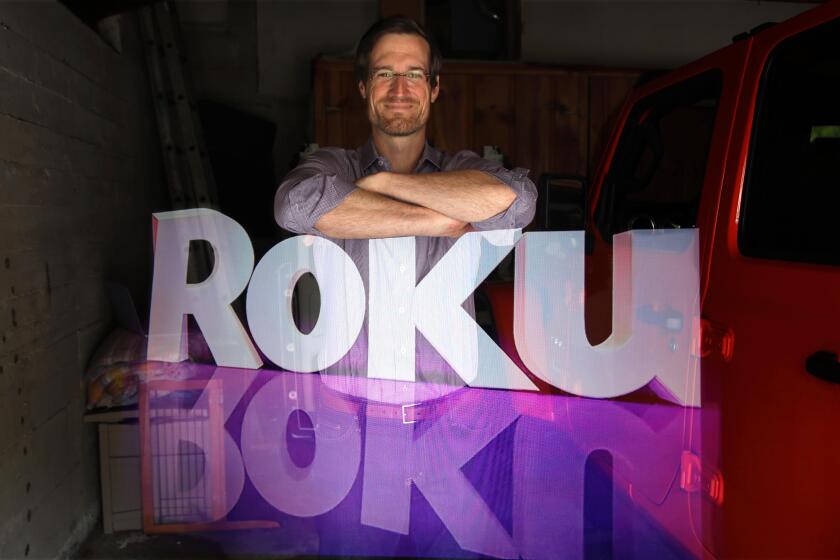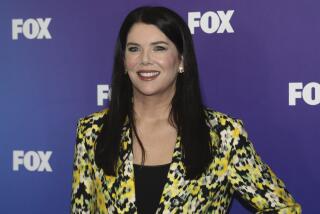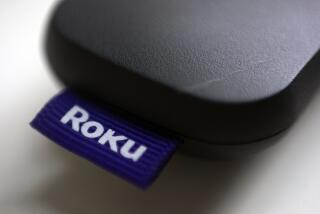Why Kevin Hart’s Quibi series is ‘huge’ on the Roku Channel
- Share via
When Kevin Hart’s comedy action series “Die Hart” debuted on Quibi in July 2020, things were already going south at the fledgling subscription streaming service.
There weren’t enough paying customers, limiting the buzz that Hart’s show could build. A few months later, Quibi announced it was shutting down, throwing the future of “Die Hart” and dozens of other short-form programs in doubt.
Now the series — in which Hart portrays a fictional version of himself who goes to action star training school — is thriving on the Roku Channel. Roku recently announced it was renewing the show, produced by Hart’s production company, with a second season called “Die Harter.”
“Roku’s massive reach of over 70 Million delivered record numbers to our (first) installment of ‘Die Hart’,” Hart wrote in a recent Facebook post. “HUGE!!!!!”
Roku, the San Jose-based connected TV hardware and software company, attributes the success of “Die Hart” to the comedian’s popularity, the platform’s marketing prowess, its already existing large audience and the fact that it’s free. (Quibi had cost a minimum of about $5 a month with ads.)
“The ability to leverage the Roku platform to connect that really broad user base with this content was very powerful,” said Rob Holmes, Roku’s vice president of programming. “Look, everyone knows Kevin Hart, but not that many people knew ‘Die Hart.’ So the idea that there’s this great Kevin Hart thing with John Travolta that you’ve never seen before, being able to promote that to users on the home screen on the Roku platform was a very powerful tool as well.”
Roku purchased the global distribution rights to Quibi’s library last year and released 30 shows on May 20 on the Roku Channel.
Although the company has declined to provide viewership data, executives said the early signs are promising, suggesting there may be a second act for at least some of the much-hyped programming from the now-defunct startup led by Jeffrey Katzenberg and Meg Whitman.
For the first two weeks, Roku says that viewers watched on average more than nine episodes of former Quibi shows (now known as Roku Originals). More people watched those shows on Roku, the company said, than the entire time they were on the short-lived platform.
There are several explanations for the improved fortunes of these orphaned programs.
For one thing, Roku, unlike Quibi, already has a massive audience because it powers the software in one in three smart TVs in the United States. That gives Roku significant influence over what people watch and leverage when it negotiates with other streamers and advertisers over access to its platform. Many consumers rely on Roku as a hub that connects them to various streaming services, including its own free, ad-supported the Roku Channel.
Quibi’s decision to shut down the company is forcing more than 200 employees out of work.
“We’re excited that these folks have found a larger audience than they’ve been able to before,” Holmes said. “It just speaks to what we’ve built here, the scale that we can now deliver, and the big future ahead.”
When “Die Hart” and other former Quibi shows arrived on the Roku Channel on May 20, a photo of Hart and other stars were prominently featured on the channel’s homepage, signaling to its estimated audience of 70 million people to watch the show. Roku users were already accustomed to sitting through ads.
In contrast, Quibi had the major challenge of educating consumers about its brand, which stood for “quick bites” of video. The company had to build awareness for Quibi and convince consumers to pay for it in the midst of a global pandemic.
Roku was founded in 2002 and means “six” in Japanese, representing the number of companies launched by founder and Chief Executive Anthony Wood.
Quibi, the Hollywood streaming service that shut down in December, sold the global distribution rights of its shows to Roku. Analysts say shows that feature A-list celebrities will likely succeed in attracting a larger audience.
The technology company was already known for making connected TV hardware and software when it launched the Roku Channel in 2017 featuring licensed TV shows and movies.
Today, the channel’s library includes more than 40,000 free shows and movies with ad breaks. Roku makes money off the channel through advertising and by partnering with other streamers, helping them promote their services on the Roku Channel. For example, when consumers choose to subscribe to an outside streamer like BET + on the channel, Roku gets a cut of the subscription revenue.
The channel’s popularity has continued to grow, especially during the pandemic when consumers were sheltered at home. In the first quarter of 2020, the channel reached U.S. households with an estimated 36 million people. A year later that grew to 70 million people.
Roku is expected to spend more than $1 billion on content in the next couple of years to further expand its reach at a time when industry leaders Netflix, Disney and Amazon are spending vast sums on original content to boost their respective streaming services (Roku declined to comment on spending levels).
Last month, Roku signed a deal with Saban Films to bring its feature movies to the Roku Channel after they are released in theaters.
A new report suggests more than 60% of people who dropped a streaming service did so after they watched the show or movie that got them to sign up.
After Quibi shut down in December and Roku acquired the distribution rights to 75 shows and documentaries for less than $100 million, many analysts were skeptical the programs would succeed on the Roku Channel. After all, they were produced in chapters of 10 minutes or less and originally intended for viewing on mobile devices.
Roku’s fortunes have brightened considerably since the COVID-19 pandemic halted production in Hollywood and confined people to their homes.
“This was an opportunity for us to pick up 75 test balloons that accelerate our learning and understanding,” Holmes said.
Although some of the 30 former Quibi shows haven’t worked, “we’ve seen examples of success across all the different ranges,” Holmes added.
Another Quibi show that has performed well, Holmes said, is the home renovation show “Murder House Flip,” which highlights renovations to homes where people have been murdered.
The remainder of the 75 Quibi programs will be rolled out on Roku later this year.
Although some viewed Quibi’s short-form format as gimmicky, Holmes said he sees the value in having a minute of ads after each roughly 10-minute episode. It’s a natural break point, he said, because narrative-driven, scripted Quibi programs often ended each chapter in a cliffhanger moment, encouraging viewers to continue watching.
Shortly after the streaming platform launched, marketing consultants advised the company to change course, but they were largely ignored, sources said.
Quibi had hoped to help usher in a new form of storytelling that, with its short episodes, would appeal to millennials on the go. But not all people are sold on the future of TV being ten minute episodes.
The short format can be helpful as a proof of concept to help nurture talent or tell stories suited for a short, but in general, audiences will continue to watch 10 minutes of content they already like seeing if they have limited time — regardless of the format, Netflix co-Chief Executive Ted Sarandos said during a virtual session at the Banff World Media Festival earlier this month.
“There’s not a specific drive towards shorter content,” he said
Even as businesses reopen, many consumers are sticking to new entertainment habits they developed during the pandemic.
Analysts say consumers will likely sign up for more than one streamer, leaving room for rivals to try out new strategies. This month, Nielsen released data that showed streaming represents just 26% of total TV viewing time in the U.S. Cable represents 39% and broadcast represents 25%, Nielsen said.
As more people shift to streaming TV, Roku stands to benefit. The company’s shares were trading at $402.47 on Tuesday afternoon, up 5%, and up a whopping 210% from a year ago.
“We know that people are looking to save money, and the decision to cut the cord and move to streaming is one that’s largely motivated by the desire to save money,” Holmes said.
More to Read
Inside the business of entertainment
The Wide Shot brings you news, analysis and insights on everything from streaming wars to production — and what it all means for the future.
You may occasionally receive promotional content from the Los Angeles Times.














